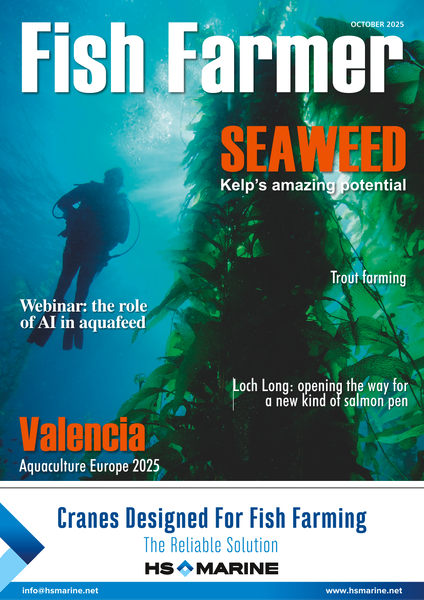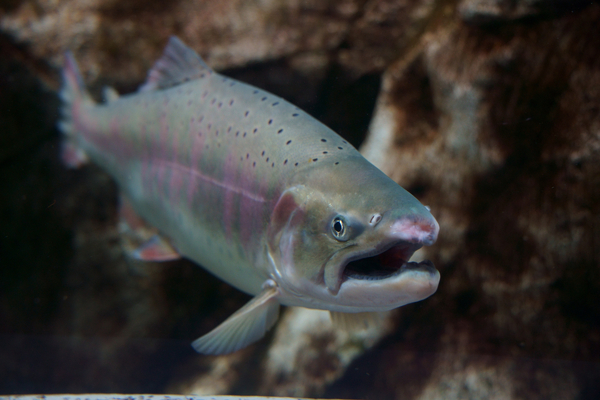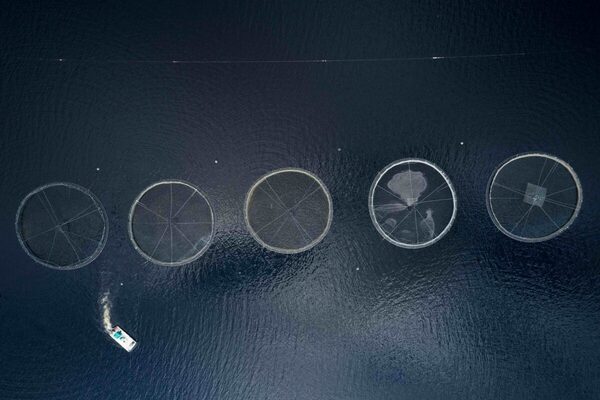Welfare matters: the 2025 Fish Vet Society conference
Fish welfare was the theme for the annual conference of the Fish Veterinary Society (FVS), held at Norton House Hotel & Spa, Edinburgh, over 4-5 March.
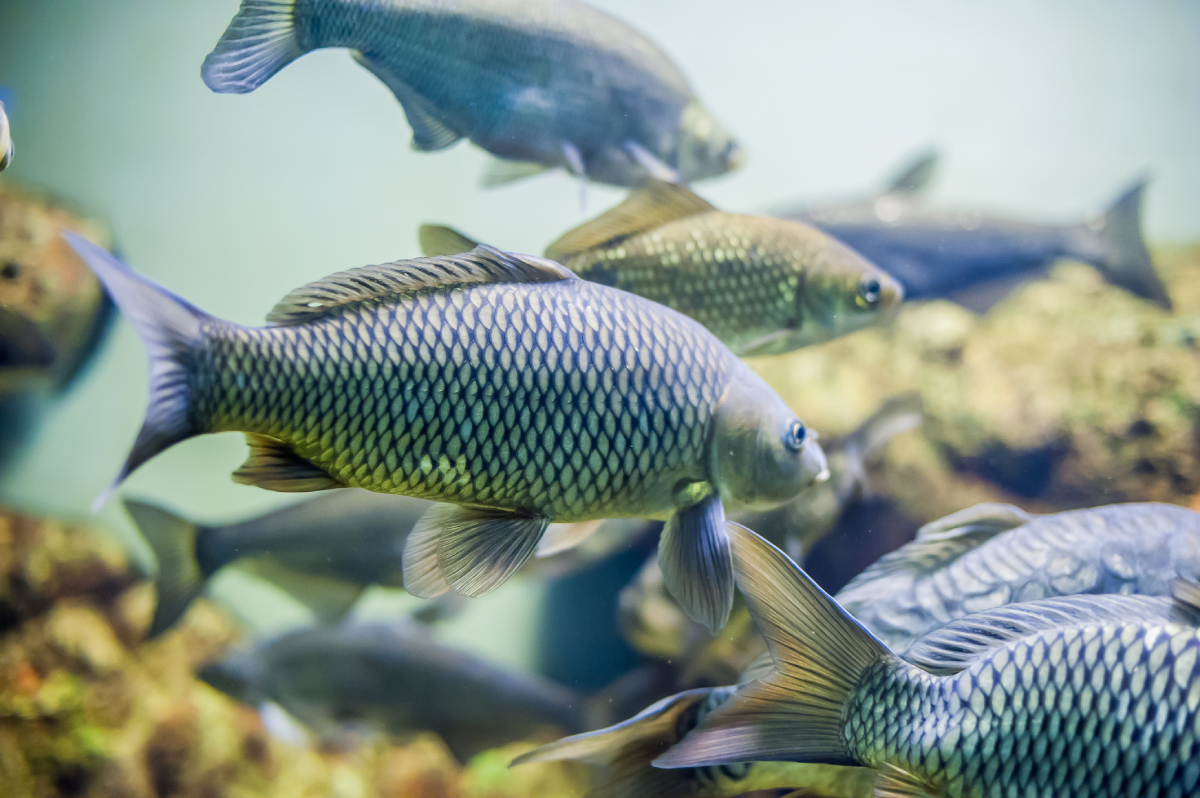
Introducing the conference was Máirin-Rua Ní Aodha, President of the FVS – she is also a veterinary surgeon with Mowi. She shared the legend of the Salmon of Knowledge, a powerful symbol in Irish mythology, representing wisdom and prophecy, and added that there is still much more to learn from the salmon.
You can see Fish Farmer’s interview with Máirin-Rua here.
The first speaker was Wasseem Emam, Founder and Director of Ethical Seafood Research. His organisation has been applying the concept of “One Welfare” – which includes animal welfare, human wellbeing, and environmental sustainability – to the tilapia industry in Egypt.
Egypt accounts for 75% of African aquaculture and the industry is predominantly focused on tilapia. Egypt is the third largest producer of tilapia globally. Most farms are based in the Nile Delta and typically use earthen ponds. In Egypt, tilapia is considered a low-cost protein source rather than a premium product like salmon in Europe and North America, making it challenging for farmers to prioritise fish welfare over cost.
ESR began with focus groups involving farmers, supply chain businesses and feed mills. It found a general lack of familiarity with the concept of fish welfare, no monitoring of water quality and minimal record keeping. During harvest, crowding and slaughter processes were issues.
ESR collaborated with specialist teams who travel between farms to slaughter the tilapia, providing them with basic training on fish welfare. The organisation also worked with farmers, with support from FAI Farms, to help them monitor water quality. Additionally, FAI developed a tilapia welfare app to assist the farmers and worked with a behavioural change expert to find strategies to change farmer behaviour.
Emam concluded: “We have improved the lives of around 260 million tilapia through this partnership with FAI.”
Daniel Sanchez Lacalle, a Research Manager with not-for-profit organisation Compassion in World Farming, talked about the “One Welfare” concept – “Animals, People, Planet” – as it applies to aquaculture.
As he defined it: “Animal welfare encompasses both the physical and mental wellbeing of an animal as well as their ability to engage in behaviours that are important to them.”
He gave as a case study the CIWF campaign on eyestalk ablation in shrimp farming. The organisation was able to show that farmers could achieve the same levels of productivity without resorting to ablation.
Consumers are increasingly aware of welfare issues, he noted. A consumer survey carried out for Eurogroup for Animals found that 71% of consumers agreed that “fish feel pain”. 91% said fish should be protected to the same extent as land animals. 69% would like to see rearing and slaughter information on the labels and 61% said fish welfare impacts their buying choices.
Lacalle concluded with three key takeaways:
1. It is useful to take strategic decisions regarding welfare implementation.
2. Communication is essential for this framework.
3. We can shape future aquaculture into something more sustainable and ethical.
Felix Scholz, Head of Clinical Services, STIM UK & Ireland, spoke about “Welfare in a changing marine environment.”
On average, sea surface temperatures in the waters around Ireland are 0.4% warmer in the 21st century relative to 1960-1990. About half that increase can be attributed to the Atlantic’s normal cycle of temperature changes, and half to global warming.
There has also been a significant increase in marine heatwaves, up to six more per year in some areas, comparing 2000-2016 with 1982-1998.
In 2023 a severe marine heatwave developed in the eastern north Atlantic and in a region west of Ireland, the sea surface temperature reached 4C above average.
This rise in temperatures over the past few years, Scholz said, has been associated with increased environmental challenges. These have included increased instances of phytoplankton and gelatinous zooplankton (jellyfish) and a longer risk period – now April to December.
There is also a higher risk of gill disease and skin diseases, and an increased variety of problematic species, from “Portuguese man o’war” siphonophores (Physalia physalis) to toxic phytoplankton blooms.
Managing these risks is not easy, Scholz said. Understanding the critical thresholds is hard to assess and there are trade-offs – for example, withholding feed is resorted to but how long is too long without feed?
Scholz said: “The challenge is managing multiple diseases, with conflicting management strategies.”

Humane slaughter
Professor Jimmy Turnbull, formerly of the University of Stirling, spoke about a project studying slaughter techniques, funded by the Humane Slaughter Association.
Among the key principles for humane slaughter, he said, are: stress free handling; effective stunning with a rapid loss of sensibility; sustained insensibility following stunning; and effective killing, with confirmation of death.
In terms of stunning, he said, in-water electrical stunning (with percussive backup if required) makes for an excellent method. Prof Turnbull said this, combined with killing by percussion and bleeding, with additional percussive stunning if required, could be regarded as “best practice”.
Percussive stunning, which is still commonly used, needs very careful setup and is not suitable for small fish or many common species.
Dry electrical stunning has a number of issues, not least because taking the live fish out of the water itself is likely to cause distress.
CO2, used to suffocate the fish, is “not a humane option… quite horrific.”
Welfare considerations should take account of species characteristics, he stressed. For example, percussive stunning is quite effective with Atlantic salmon, but less so for tilapia, which has a skull that protects its brain and can also vary in its structure. There are similar problems with pangasius (“basa”).
He gave a special mention to Dundee based company Ace Aquatec, which has been working around the world in countries like Mexico, Honduras and Indonesia to introduce humane electrical stunning.
The science behind stunning can be quite complex, Professor Turnbull stressed. The physics of running an electrical current through water can depend on several factors and the effectiveness of the process can be affected by the “wave form” of the energy as well as the strength of the electric current.
Assessing “insensibility” or “consciousness” is important, he added, but it is something that is hard to define or measure, whether for fish or for humans. It is not a binary question and there are graded states of consciousness and unconsciousness.
Yannick Rohrer, of Fair Fish, spoke about implementing fish welfare in practice in Switzerland where most fish farms are small flow-through farms rearing salmon, perch or pike-perch.
Fair Fish had developed operational welfare indicators (OWIs) covering issues such as farm management, water quality, fish behaviour, external appearance and internal appearance (when a sample fish is examined by a vet).
Farmers were sceptical, Rohrer said, but Fair Fish emphasised the benefits of early detection of problems, and also of incorporating OWIs into routine procedures.
Shannon Davis, of the Shrimp Welfare Project, talked about how the SWP (which is based in the US but largely works in India with Sustainable Shrimp Farms of India – SSFI) had developed a shrimp welfare index. This is a points-based framework assessing a farm against a “gold standard” on criteria such as stocking density, slaughter methods and whether eyestalk ablation is used.
Next steps will be implementation, data collection, engaging other certifying bodies and helping producers to draw up a “roadmap” to better welfare.
Also, Professor Amaya Albalat of Stirling spoke about shrimp welfare at slaughter.
The 2022 Animal Welfare (Sentience) Act introduced in the UK recognised decapod sentience (shrimp, crabs, lobsters etc) – at least in principle. The legislation has not changed (yet) on welfare and slaughter, but retailers and the seafood industry are driving change.
Stirling is now investigating the effectiveness of electrical stunning and other slaughter methods for crustaceans, measuring neurological readings and visual response. So far, it appears that cold shock is faster – and the aversive reaction seen with cold shock can be eliminated by prior electrical stunning. The next step will be field trials in commercial farms in Vietnam and Thailand.

Panel discussion
The afternoon session began with a panel discussion on welfare, featuring:
- Jonathan Balcombe – author, What A Fish Knows (joining online);
- Iain Berrill – Head of Technical, Salmon Scotland;
- James Sibley – podcaster;
- Kristian Natland – Patogen / Fisketimen podcast;
- Sean Black – RSPCA; and
- Máirin-Rua Ní Aodha – FVS – Panel Chair.
The first question was deceptively straightforward: “What does fish welfare mean?”
For Jonathan Balcombe, the key concept was “sentience”. As he put it: “The evidence for sentience in fish is very robust. They react to pain and noxious substances, and they problem solve. They are sensitive, and they are vulnerable.”
Iain Berrill pointed out that welfare is not an easy thing to define: “Everybody has a view that fish welfare matters, but we tend to have a problem articulating it.”
Kristian Natland said: “We should be thinking about freedom from pain, hunger and so on, but we should also think about the positives. We must do better than simply avoid suffering.”
Sean Black stressed: “For the RSPCA, welfare is about the quality of life throughout the animal’s life cycle.”
The panel also discussed the importance of narrative in understanding aquaculture and explaining it to the public.
Trust and transparency were key, the panel agreed. Iain Berrill pointed out there are consumers who don’t want to know the detail of how their food was produced, but they do want to know who they can trust.
James Sibley argued the digital side to this is key, and fish farmers need to work together to tell their story.
Communication and earning the “social licence” to operate were crucial, the panel concluded.
However, Jonathan Balcombe warned: “We do need to be concerned about the welfare of the animals we farm, but consumers also have to be aware that they have a choice not to consume the product.”
The final session of day one covered the role of AI and technology in forecasting welfare issues. John Costantino, CTO with Manolin, talked about how his company had developed software to systematise the data collected at fish farms.
Rochak Sharma, of Tidal, explained how Tidal combines AI with underwater cameras. This had a number of potential applications, from identifying what makes some individual fish “lice magnets” to predicting growth rates and mortality events, correlated with environmental data.
Gunnar Berg of Aquabyte described his company’s machine learning product, which not only can be used for biomass estimation and lice counts, but also can assess welfare based on a scoring system and monitor fish behaviour to spot signs of a fish with problems.
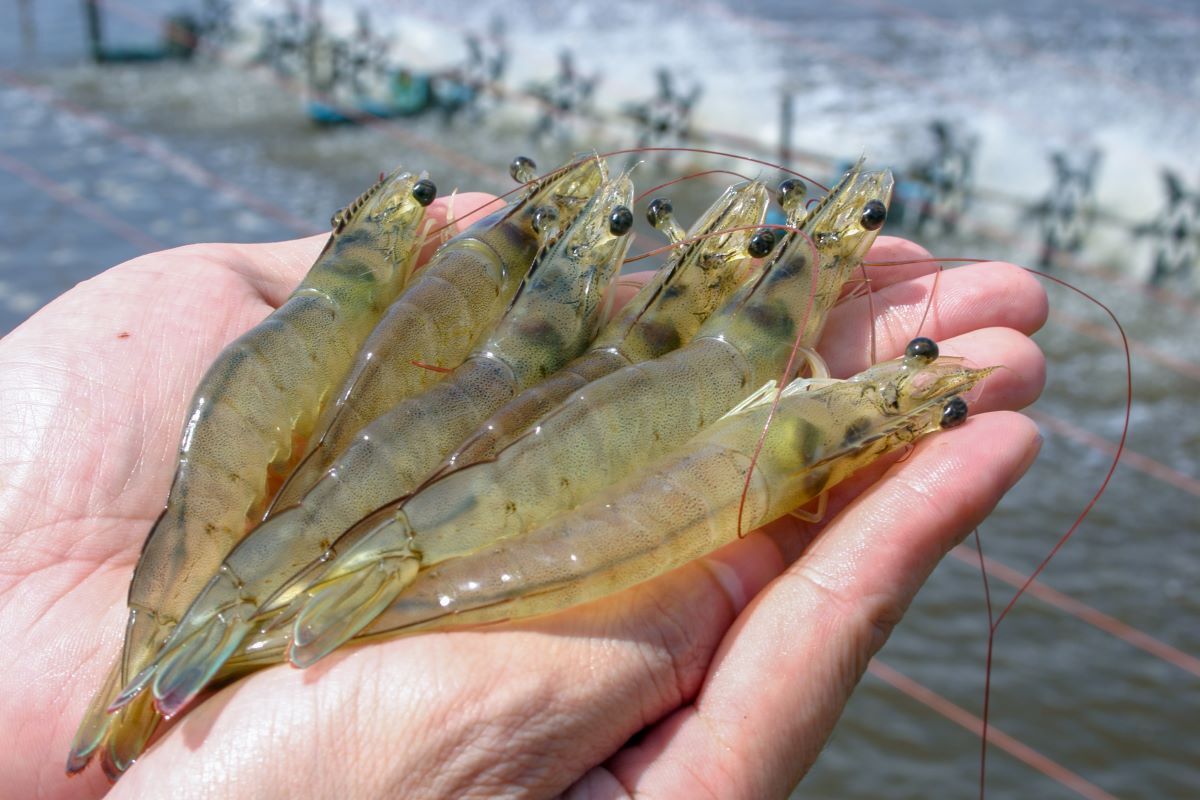
Clinical conclusions
Starting day two, Ezra Herman of Esox Biologics talked about the importance of the fish microbiome – the community of micro-organisms living on and in the fish – and explained the Esox approach to analysing it, which uses metagenomics – analysing genetic material to see which organisms are present.
In the first of the “Clinical Club” sessions, Chris Mitchell of Laxsal gave a report from the Bergen Trinations Conference last year, in which fish vets from different countries compared notes on the emerging threats in different regions, from piscine ortheovirus (PRV) to heart problems.
Richard Hopewell of Ocean Ecology explained the spinal deformity scoring system his company has developed, which allows comparisons between groups and populations.
Rose Ruiz Daniels of the University of Stirling described a study on wound healing that sought to understand why some wounds heal and others do not. The “wound atlas” the scientists developed shows how different types of cells heal at different rates, with the potential for future research.
Howard Cox of Mowi Scotland explained how Mowi had been experimenting with “bubble curtains” using compressed air to protect fish in pens against jellyfish.
Cox described the results as “promising” with a 31% reduction in jellyfish numbers and a positive impact on fish welfare. In particular, the fish were able to feed more regularly as less fasting was required. He stressed: “Maintenance and reliability are key.”
Johanna Baily of Patogen gave a talk on gill pathology and how a new approach to the graphical representation of gill health issues could help to communicate complex data.
Also at the conference, delegates heard about a range of topics including the role environmental enrichment could play in improving fish welfare; how observing fish behaviour can give an insight into cumulative stressors; what behaviour can tell us about the welfare of ornamental fish; and the welfare implications of purse seine fishing.
Finally, looking ahead to the future of fish welfare, Sara Barrento of FAI explained how a welfare application for tilapia had been developed and applied in the field, while Alice Di Concetto of the European Institute for Animal Law & Policy gave a European perspective on the protection of fish in law.
The FVS is a specialist group of the British Veterinary Association.
Sponsors for the conference were Aqua Pharma, Aquatreck, Cooke Scotland, Esox Biologics, HIPRA, Patogen, Standard Biotools, The Fish Vet, Scottish Sea Farms, STIM and Ocean Ecology.

Why not try these links to see what our Fish Farmer AI can tell you.
(Please note this is an experimental service)
